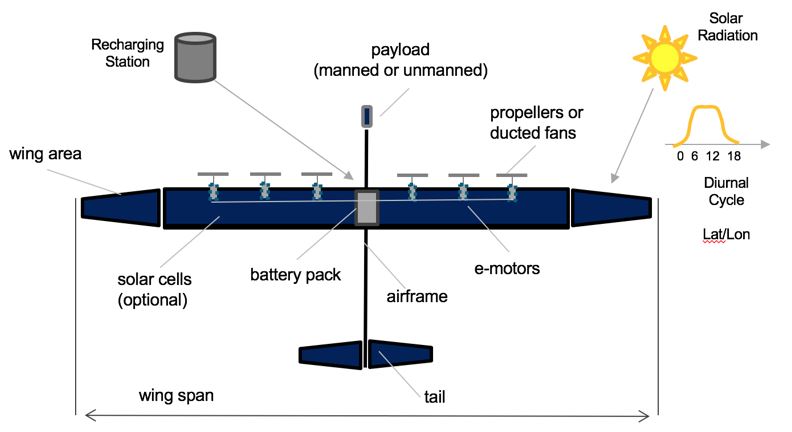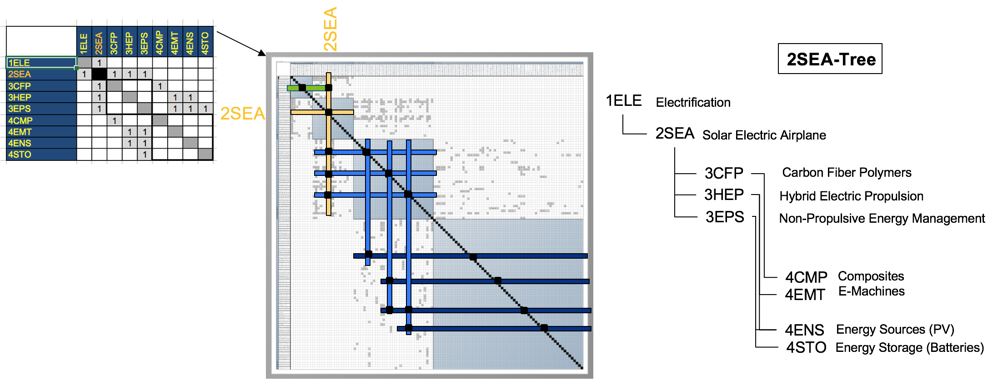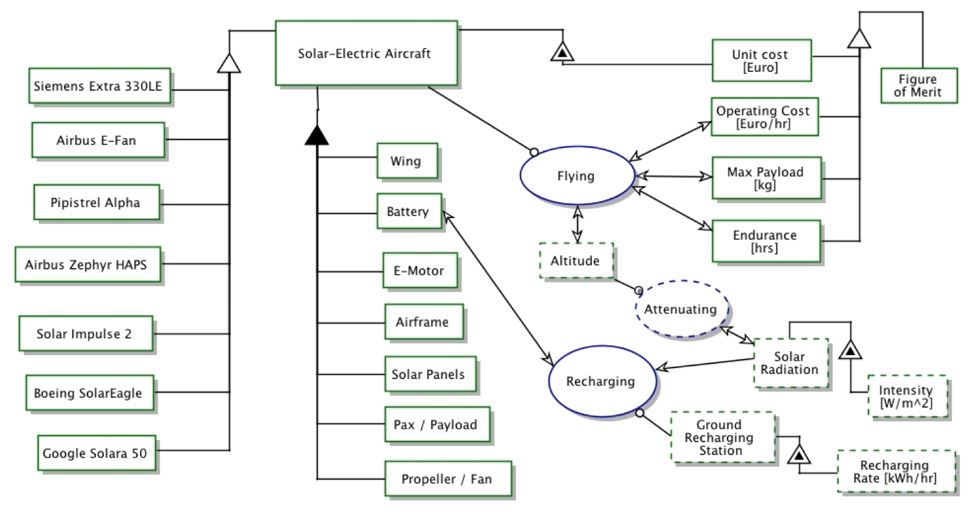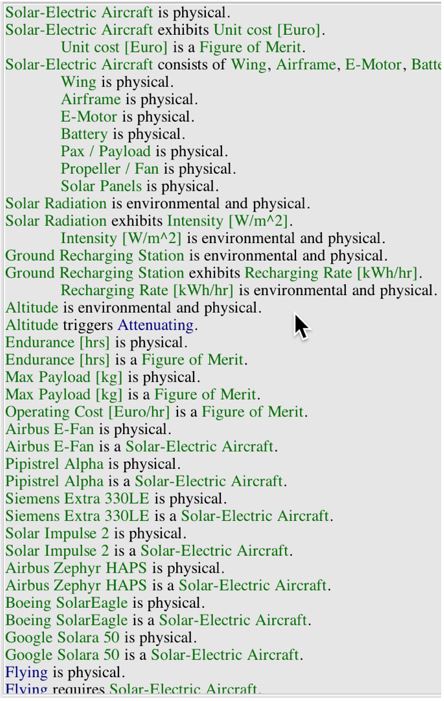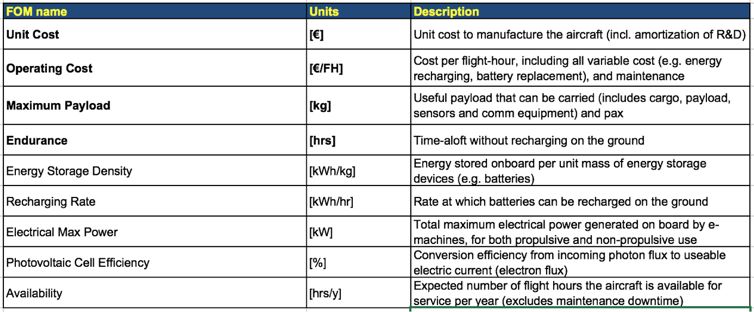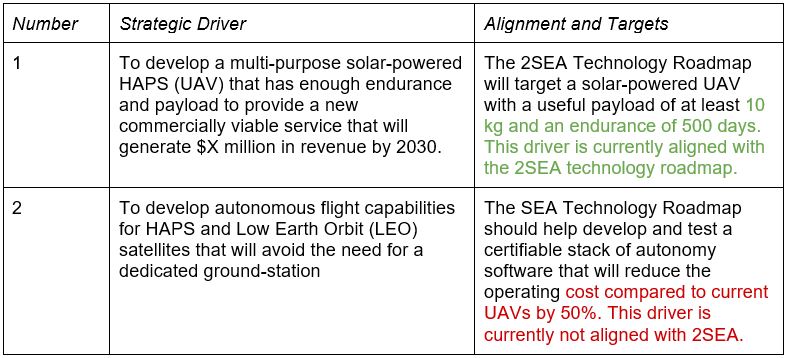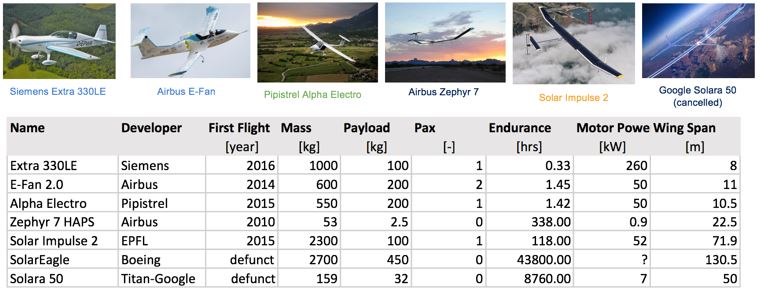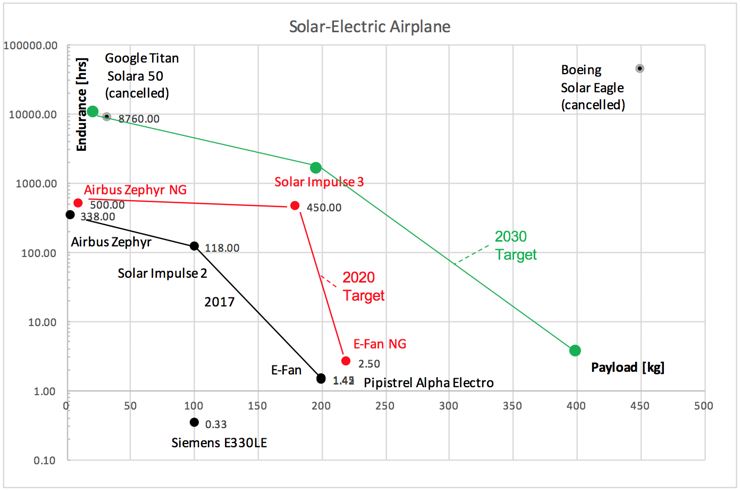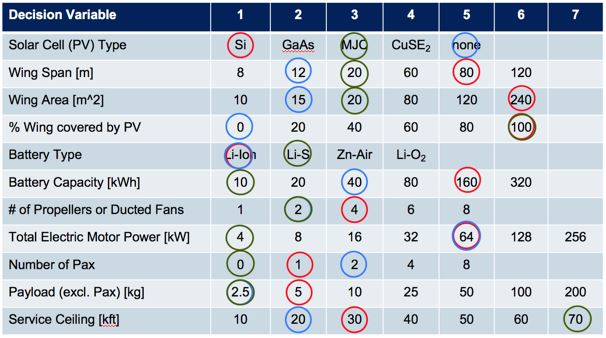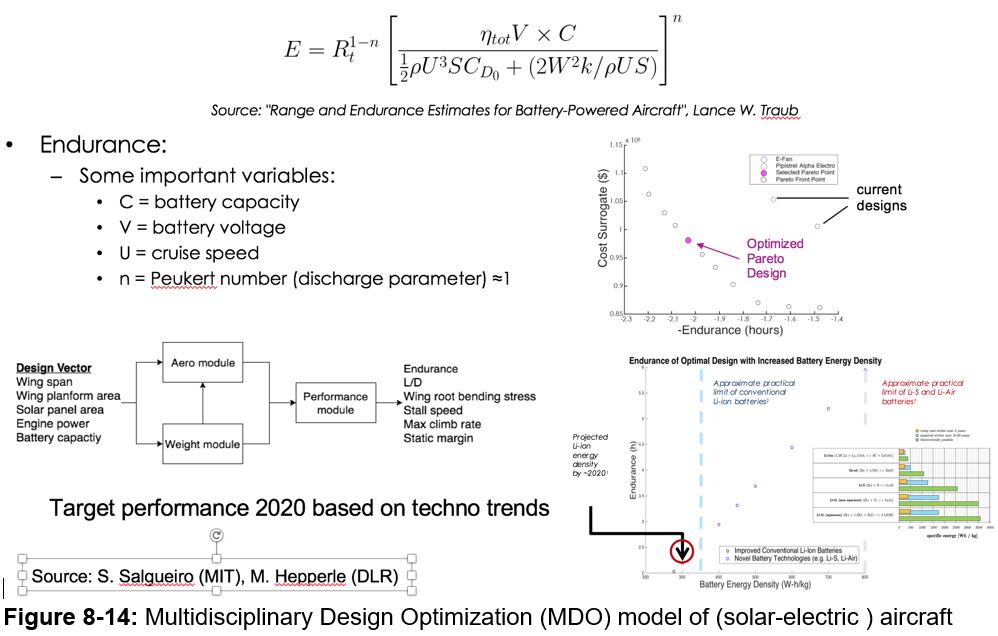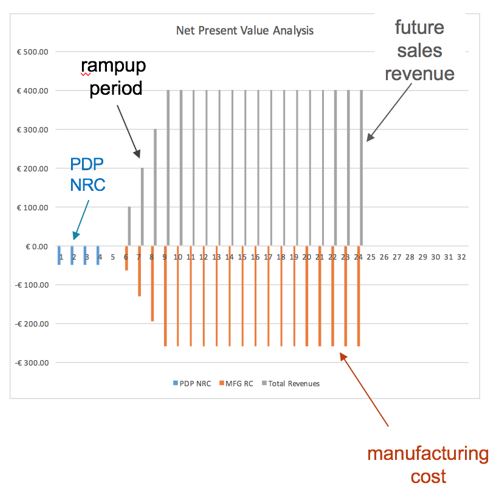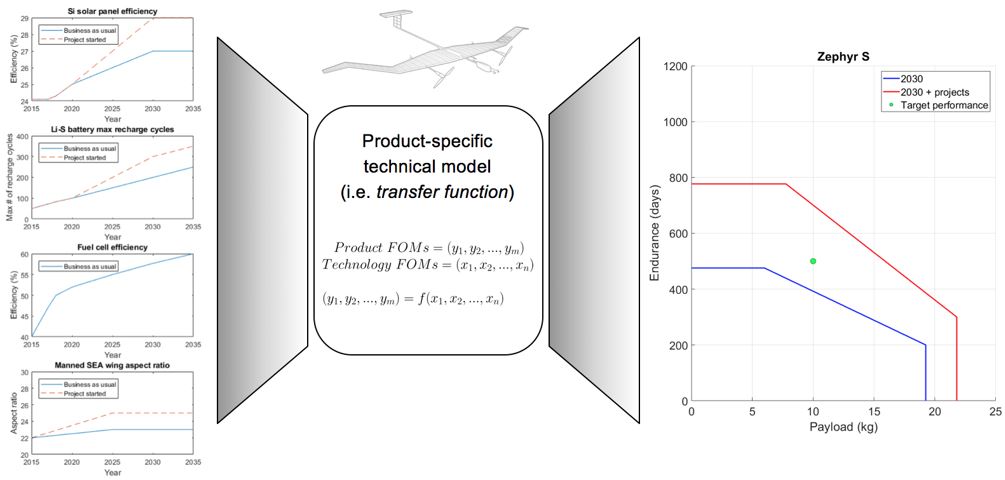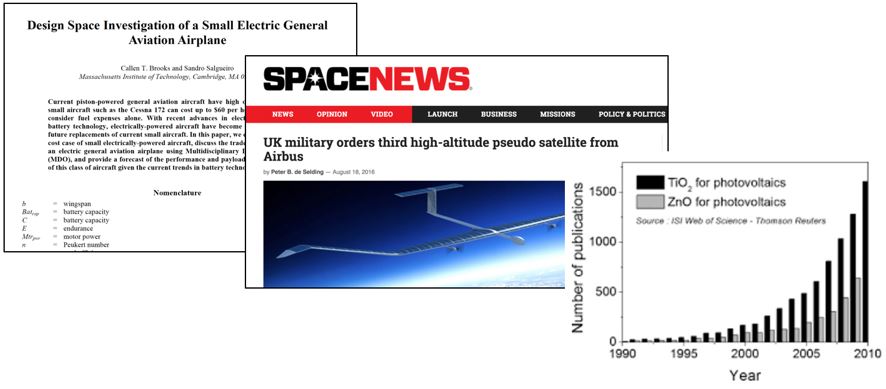Main Page
MIT 16.887-EM.427 Fall 2019 Course
We will be using this wiki platform to record progress on the semester-long technology roadmapping projects completed in teams of two. As you progress through your projects, be sure to keep your project pages up to date as each Assignment calls for. Also, be sure to have back ups of the information you place on your project page to avoid any accidental deletions that may occur from joint editing of a wiki (however, this can be more easily avoided by only editing your project's page, and not this main page or any other team's).
If you have trouble editing the wiki, please let us know.
Class Project - Technology Roadmaps
Below, each team will create a page for their technology roadmap which will be built up as the semester progresses. For an example, see the Sample Technology Roadmap below taken from Chapter 8 of the text. You may use this sample as a template and also as a guide for how to edit/format your own wiki page, but please be sure NOT to edit the Sample Technology Roadmap, simply copy over any desired formatting, headers, etc. over to your project page.
Sample Technology Roadmap - Solar Electric Aircraft, by de Weck, Haji and Trujillo
We provide a notional technology roadmap for solar-electric aircraft as a potential new business category. The potential market and business applications for this type of aircraft, also known as High-Altitude-Pseudo-Satellites (HAPS) includes military surveillance, civilian research and observation, and radio communications relays, amongst others.
Ballistic Vests, by Li and Lew
Short description of your selected technology here.
Plant Genetic Improvement, by Lordos, Smith and Slominski
Humans have been improving the genome of useable plants for millenia through unintentional, and later intentional selection. The last 100 years have seen increasing advances in artificial methods to improve the genetics of useful plants through increasingly scientific approaches.
Satellite Communication, by Robinson, Wan, and Wilson
Satellite-based internet/voice access is enabled by high-throughput satellites (HTS), which provide many times greater data throughput than conventional satellites. Data encoded in radio waves is sent between the ground station’s transceiver, relayed via the satellite, and the modem at the user’s end. Some next-generation satellite systems follow low-earth orbit rather than geosynchronous orbits, using a constellation formation to keep in constant touch with ground stations.
In-Space Additive Manufacturing, by Lee, Mandal, and Moraguez
Short description of your selected technology here.
Wind Turbine - Energy Harvesting, by Wainer, Sakhamuru, and Fukatsu
Wind energy is one solution to changing over to a cleaner energy source than carbon dense fuel power plants. By harnessing the kinetic energy of the air around us, and transforming it into electricity, wind turbines can relieve some of the power needs of the growing population.
Autonomous System for Ground Transport, by Chun and Yang
The autonomous system for ground transport has been surging in the last decade but also possesses an origin dated almost a century back. It is a technology that has not just historical information but also referential data since it has been employed in other analogous systems such as autopilot on airplanes. By reviewing relevant metrics and evaluating technology readiness level, we construct roadmap for autonomous system for ground transport in order to collect insights and illustrate guidance on where and how this technology will move forward.
Augmented, Virtual, and Mixed Reality, by Baylor and LeBlanc
Augmented, virtual, and mixed realities reside on a continuum and blur the line between the actual world and the artificial world. We offer a roadmap to explore the relationships of this technology, align capabilities to future market needs, and define a timeline for technology maturation and adoption.
Energy Storage via Battery, by Cadario, Johnson, and Tamura
Short description of your selected technology here.
Orbital Launch Vehicles Roadmap, by Kharsansky
Orbital launch vehicles (LV) are internally rocket-propelled vehicles used to carry payloads from Earth’s surface to low earth orbit and beyond. This roadmap explores the capacity that the Human race has to put payloads in orbit as a technology enabler for future space and planetary exploration.
High-Speed Rail, by Enti, de Filippi, Kimura, and Soeda
Short description of your selected technology here.
E-commerce: Reverse-Procurement Auctions, by Ravenel and Goolsby
Short description of your selected technology here.
Sparse Apertures for Next Generation Optical Space Telescopes, by Chris and Michael
The angular resolution of a telescope is proportional to the size of the aperture. The mass and thus cost of space telescopes increases exponentially with aperture diameter. There is a need for systems that can produce the equivalent of a large aperture with low mass.
Remote Operated Processing Platform, by Asa, Johnson, Rahill
Remote Operated Processing Platform for Offshore Oil and Gas
Note: This sample technology roadmap is taken from the example provided in Chapter 8 of the book. For the full discussion, see the Chapter. This page is meant only as an example of how the sections of your team's technology roadmap should be organized and formatted on this XLP.
Technology Roadmap Sections and Deliverables
The first point is that each technology roadmap should have a clear and unique identifier:
- 2SEA - Solar Electric Aircraft
This indicates that we are dealing with a “level 2” roadmap at the product level (see Fig. 8-5), where “level 1” would indicate a market level roadmap and “level 3” or “level 4” would indicate an individual technology roadmap.
Roadmap Overview
The working principle and architecture of solar-electric aircraft is depicted in the below.
Solar-electric aircraft are built from light-weight materials such as wood or carbon-fiber reinforced polymers (CFRP) and harvest solar energy through the photoelectric effect by bonding thin film solar cells to the surface of the main wings, and potentially the fuselage and empennage as well. The electrical energy harvested during the day is then stored in on-board chemical batteries (e.g. Lithium-Ion, Lithium-Sulfur etc…) and used for propelling the aircraft at all times, including at night. For the system to work there needs to be an overproduction of energy during the day, so that the aircraft can use the stored energy to stay aloft at night. The flight altitude of about 60,000-70,000 feet is critical to stay above the clouds and not to interfere with commercial air traffic. Depending on the length of day, i.e. the diurnal cycle which determines the number of sunshine hours per day, which itself depends on the latitude and time-of-year (seasonality) the problem is easier or harder. The reference case in the technology roadmap is an equatorial mission (latitude = zero) with 12 hours of day and 12 hours of night.
Design Structure Matrix (DSM) Allocation
The 2-SEA tree that we can extract from the DSM above shows us that the Solar-Electric Aircraft (2SEA) is part of a larger company-wide initiative on electrification of flight (1ELE), and that it requires the following key enabling technologies at the subsystem level: 3CFP Carbon Fiber Polymers, 3HEP Hybrid Electric Propulsion and 3EPS Non-Propulsive Energy Management (e.g. this includes the management of the charge-discharge cycle of the batteries during the day-night cycle). In turn these require enabling technologies at level 4, the technology component level: 4CMP components made from CFRP (spars, wing box, fairings …), 4EMT electric machines (motors and generators), 4ENS energy sources (such as thin film photovoltaics bonded to flight surfaces) and 4STO (energy storage in the form of lithium-type batteries).
Roadmap Model using OPM
We provide an Object-Process-Diagram (OPD) of the 2SEA roadmap in the figure below. This diagram captures the main object of the roadmap (Solar-Electric Aircraft), its various instances including main competitors, its decomposition into subsystems (wing, battery, e-motor …), its characterization by Figures of Merit (FOMs) as well as the main processes (Flying, Recharging).
An Object-Process-Language (OPL) description of the roadmap scope is auto-generated and given below. It reflects the same content as the previous figure, but in a formal natural language.
Figures of Merit
The table below show a list of FOMs by which solar electric aircraft can be assessed. The first four (shown in bold) are used to assess the aircraft itself. They are very similar to the FOMs that are used to compare traditional aircraft which are propelled by fossil fuels, the big difference being that 2SEA is essentially emissions free during flight operations. The other rows represent subordinated FOMs which impact the performance and cost of solar electric aircraft but are provided as outputs (primary FOMs) from lower level roadmaps at level 3 or level 4, see the DSM above.
Besides defining what the FOMs are, this section of the roadmap should also contain the FOM trends over time dFOM/dt as well as some of the key governing equations that underpin the technology. These governing equations can be derived from physics (or chemistry, biology ..) or they can be empirically derived from a multivariate regression model. The table below shows an example of a key governing equation governing (solar-) electric aircraft.
Alignment with Company Strategic Drivers
The table below shows an example of potential strategic drivers and alignment of the 2SEA technology roadmap with it.
The list of drivers shows that the company views HAPS as a potential new business and wants to develop it as a commercially viable (for profit) business (1). In order to do so, the technology roadmap performs some analysis - using the governing equations in the previous section - and formulates a set of FOM targets that state that such a UAV needs to achieve an endurance of 500 days (as opposed to the world record 26 days that was demonstrated in 2018) and should be able to carry a payload of 10 kg. The roadmap confirms that it is aligned with this driver. This means that the analysis, technology targets, and R&D projects contained in the roadmap (and hopefully funded by the R&D budget) support the strategic ambition stated by driver 1. The second driver, however, which is to use the HAPS program as a platform for developing an autonomy stack for both UAVs and satellites, is not currently aligned with the roadmap.
Positioning of Company vs. Competition
The figure below shows a summary of other electric and solar-electric aircraft from public data.
The aerobatic aircraft Extra 330LE by Siemens currently has the world record for the most powerful flight certified electric motor (260kW). The Pipistrel Alpha Electro is a small electric training aircraft which is not solar powered, but is in serial production. The Zephyr 7 is the previous version of Zephyr which established the prior endurance world record for solar-electric aircraft (14 days) in 2010. The Solar Impulse 2 was a single-piloted solar-powered aircraft that circumnavigated the globe in 2015-2016 in 17 stages, the longest being the one from Japan to Hawaii (118 hours).
SolarEagle and Solara 50 were both very ambitious projects that aimed to launch solar-electric aircraft with very aggressive targets (endurace up to 5 years) and payloads up to 450 kg. Both of these projects were canceled prematurely. Why is that?
The Pareto Front (see Chapter 5, Figure 5-20 for a definition) shown in black in the lower left corner of the graph shows the best tradeoff between endurance and payload for actually achieved electric flights by 2017. The Airbus Zephyr, Solar Impulse 2 and Pipistrel Alpha Electro all have flight records that anchor their position on this FOM chart. It is interesting to note that Solar Impulse 2 overheated its battery pack during its longest leg in 2015-2016 and therefore pushed the limits of battery technology available at that time. We can now see that both Solar Eagle in the upper right and Solara 50 were chasing FOM targets that were unachievable with the technology available at that time. The progression of the Pareto front shown in red corresponds to what might be a realistic Pareto Front progression by 2020. Airbus Zephyr Next Generation (NG) has already shown with its world record (624 hours endurance) that the upper left target (low payload mass - about 5-10 kg and high endurance of 600+ hours) is feasible. There are currently no plans for a Solar Impulse 3, which could be a non-stop solar-electric circumnavigation with one pilot (and an autonomous co-pilot) which would require a non-stop flight of about 450 hours. A next generation E-Fan aircraft with an endurance of about 2.5 hours (all electric) also seems within reach for 2020. Then in green we set a potentially more ambitious target Pareto Front for 2030. This is the ambition of the 2SEA technology roadmap as expressed by strategic driver 1. We see that in the upper left the Solara 50 project which was started by Titan Aerospace, then acquired by Google, then cancelled, and which ran from about 2013-2017 had the right targets for about a 2030 Entry-into-Service (EIS), not for 2020 or sooner. The target set by Solar Eagle was even more utopian and may not be achievable before 2050 according to the 2SEA roadmap.
Technical Model
In order to assess the feasibility of technical (and financial) targets at the level of the 2SEA roadmap it is necessary to develop a technical model. The purpose of such a model is to explore the design tradespace and establish what are the active constraints in the system. The first step can be to establish a morphological matrix that shows the main technology selection alternatives that exist at the first level of decomposition, see the figure below.
It is interesting to note that the architecture and technology selections for the three aircraft (Zephyr, Solar Impulse 2 and E-Fan 2.0) are quite different. While Zephyr uses lithium-sulfur batteries, the other two use the more conventional lithium-ion batteries. Solar Impulse uses the less efficient (but more affordable) single cell silicon-based PV, while Zephyr uses specially manufactured thin film multi-junction cells and so forth.
The technical model centers on the E-range and E-endurance equations and compares different aircraft sizing (e.g. wing span, engine power, battery capacity) taking into account aerodynamics, weights and balance, the performance of the aircraft and also its manufacturing cost. It is important to use Multidisciplinary Design Optimization (MDO) when selecting and sizing technologies in order to get the most out of them and compare them fairly (see below).
Financial Model
The figure below contains a sample NPV analysis underlying the 2SEA roadmap. It shows the non-recurring cost (NRC) of the product development project (PDP), which includes the R&D expenditures as negative numbers. A ramp up-period of 4 years is planned with a flat revenue plateau (of 400 million per year) and a total program duration of 24 years.
List of R&T Projects and Prototypes
In order to select and prioritize R&D (R&T) projects we recommend using the technical and financial models developed as part of the roadmap to rank-order projects based on an objective set of criteria and analysis. The figure below illustrates how technical models are used to make technology project selections, e.g based on the previously stated 2030 target performance and Figure 8-17 (see the Chapter 8 of the text) shows the outcome if none of the three potential projects are selected.
Key Publications, Presentations and Patents
A good technology roadmap should contain a comprehensive list of publications, presentations and key patents as shown in Figure 8-19. This includes literature trends, papers published at key conferences and in the trade literature and trade press.
Technology Strategy Statement
A technology roadmap should conclude and be summarized by both a written statement that summarizes the technology strategy coming out of the roadmap as well as a graphic that shows the key R&D investments, targets and a vision for this technology (and associated product or service) over time. For the 2SEA roadmap the statement could read as follows:
Our target is to develop a new solar-powered and electrically-driven UAV as a HAPS service platform with an Entry-into-Service date of 2030. To achieve the target of an endurance of 500 days and useful payload of 10 kg we will invest in two R&D projects. The first is a flight demonstrator with a first flight by 2027 to demonstrate a full-year aloft (365 days) at an equatorial latitude with a payload of 10 kg. The second project is an accelerated development of Li-S batteries with our partner XYZ with a target lifetime performance of 500 charge-discharge cycles by 2027. This is an enabling technology to reach our 2030 technical and business targets.
Random Forest in Data Analytics, by Fei Yang, Dylan Toshinari Muramoto, and Phil Schmedeman
Random Forest is an ensemble Machine Learning technique to boost the accuracy of prediction for future based on the past Note: the rest of your roadmap goes in your project page which can be created by following how the sample roadmap page is created above. Click the Edit tab above and find the Sample Technology Roadmap section...you will see that a double bracket enclosing a phrase will automatically create an empty page with that name.
Getting started
- User's Guide for information on using the wiki software.
- Configuration settings list
- MediaWiki FAQ
